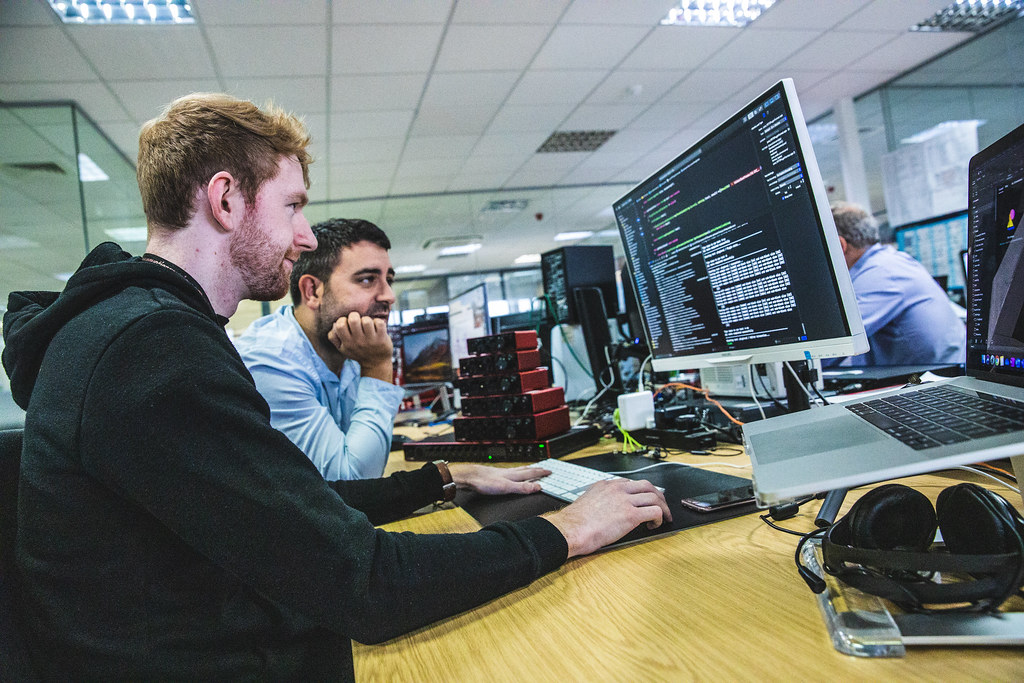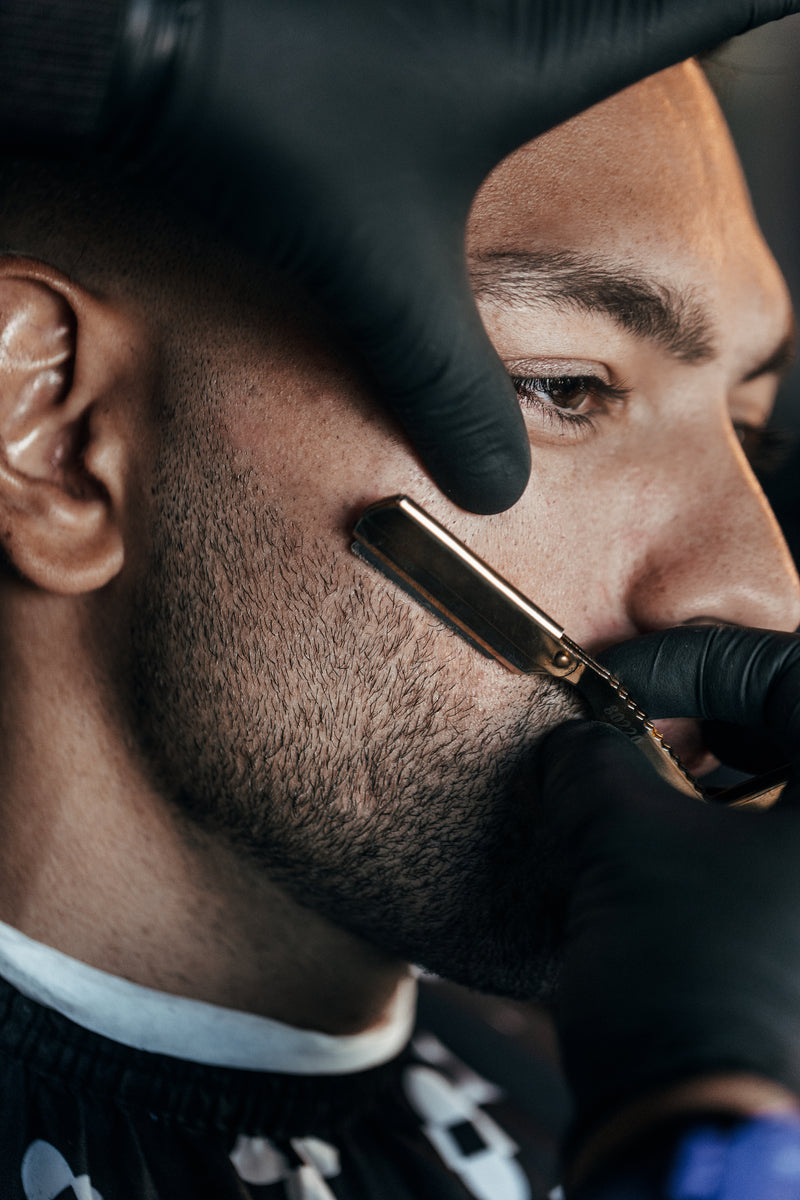Music Production Introduction: A Beginner’s Guide
Are you interested in music production, but don’t know where to start? This beginner’s guide to music production software is for you. In this article, we’ll cover everything you need to know about music production, including the definition of music production, the importance of music production software, and tips for getting started. By the end of this guide, you’ll have a solid understanding of the basics of music production, and be ready to start creating your own music.
Table of Contents

Benefits of Music Production Software
Music production software has numerous benefits, including:
1. Affordability
Music production software is a cost-effective alternative to traditional studio equipment. With software, you can access a wide range of tools and effects without the need for expensive hardware. This makes it easier for aspiring musicians to get started with music production without breaking the bank.
2. Flexibility
One of the greatest benefits of music production software is its flexibility. Unlike traditional studio setups, which require specific equipment and a dedicated space, music production software can be used on any computer. This allows you to work on your music projects anytime and from anywhere, as long as you have access to a computer.
3. Access to Variety
Music production software provides access to a wide range of sounds, instruments, and effects that are not available in traditional studios. With software, you can easily experiment with different sounds and styles to create unique music that reflects your personal style.
4. Encourages Creativity
Music production software encourages creativity by allowing you to experiment with different sounds and techniques. With software, you can easily manipulate audio files, add effects, and adjust parameters to create unique sounds and styles. This encourages experimentation and can help you develop your own unique sound.

What is Music Production?
Music production is the process of creating, recording, mixing, and mastering music. It involves several stages that must be followed to create a great final product.
Stages of Music Production
-
Composition – This is where the music producer creates a melody using a MIDI controller in a digital audio workstation (DAW) such as Ableton Live. The producer may also use virtual instruments (VSTs) such as Serum or Omnisphere to add additional sounds to the composition.
-
Arrangement – During this stage, the producer decides which instruments and elements will be used in the final product.
-
Recording – The producer uses high-quality microphones and audio interfaces to capture the music.
-
Editing – The editing stage involves manipulating the audio to remove any unwanted noise, adjust timing, and enhance the overall sound.
-
Mixing – This stage combines all the tracks into one final mix, adjusting levels, panning, and equalization of each track.
-
Mastering – Finally, the mastering stage prepares the final mix for distribution by adjusting the overall sound quality to create a consistent and polished final product.
Each stage is critical to the final product, and the producer must use specific techniques and tools to achieve the desired result. By mastering the stages of music production, the producer can create music that sounds professional and polished.

Types of Music Production Software
In the world of music production, there are several types of software available that can help you create and produce your music. These include Digital Audio Workstations (DAWs), Virtual Instruments (VSTs), and Plugins.
Digital Audio Workstations (DAWs)
DAWs are the most popular type of music production software. They provide a complete music production environment that includes recording, editing, mixing, and mastering tools. With a DAW, you can record audio, add effects and instruments, and create a final mixdown of your music. Some popular DAWs for beginners include Ableton Live, Logic Pro, and FL Studio.
Virtual Instruments (VSTs)
Virtual Instruments are software-based instruments that can be used to create music. These instruments replicate traditional instruments like piano, guitar, and drums, and can be played using a MIDI controller or your computer keyboard. VSTs also come with a wide range of presets and sound banks to help you get started quickly. Some popular VSTs for beginners include Serum, Omnisphere, and Kontakt.
Plugins
Plugins are software that can be added to a DAW or VST to enhance its functionality. These plugins include effects like reverb, delay, and compression, as well as virtual instruments, synthesizers, and more. Using plugins can help you create unique and interesting sounds, and can take your music production to the next level. Some popular plugins for beginners include Waves, FabFilter, and Soundtoys.
Whether you’re just starting out or you’re an experienced producer, understanding the different types of music production software available can help you choose the right tools for your needs.

Music Production Tools
Music production tools are essential in creating high-quality music. There are two types of music production tools: hardware and software.
Hardware
Hardware refers to all the physical equipment used in music production. Some of the most common hardware used in music production includes:
- Microphones: Used to capture sound and record vocals or instruments.
- Headphones: Used to monitor the audio while recording, mixing, or mastering.
- Audio interfaces: Used to connect microphones, instruments, and other audio gear to your computer.
- MIDI controllers: Used to control virtual instruments and other software in your DAW.
Software
Software refers to the music production tools used to create music. There are many different types of software used in music production, including:
- Digital Audio Workstations (DAWs): A DAW is the primary tool used in music production. It allows you to record, edit, and mix audio and MIDI tracks, and it includes a variety of built-in effects and virtual instruments.
- Virtual Studio Technology (VSTs): VSTs are software instruments and effects that can be used within your DAW.
- Plugins: Plugins are additional software tools that can be used within your DAW to add additional effects or functionality.
When choosing music production tools, it’s important to consider your specific needs and budget. While high-end gear can produce better results, it’s possible to create great music with more affordable equipment.

Getting Started with Music Production
If you’re new to music production, getting started can seem overwhelming. However, with the right equipment and setup, you’ll be on your way to creating music in no time.
Acquiring the Necessary Equipment
The first step in getting started with music production is acquiring the necessary equipment. While you don’t need the most expensive gear, investing in quality equipment can make a big difference in the quality of your music. Here are the essential items you’ll need:
- A computer: A desktop or laptop computer with a minimum of 8GB RAM and a fast processor is recommended.
- Music production software: There are many different music production software options available, including Ableton Live, Logic Pro, and FL Studio. Choose the software that best meets your needs and budget.
- Audio interface: An audio interface is used to connect microphones, instruments, and speakers to your computer. Look for an interface with high-quality preamps and plenty of inputs and outputs.
- Microphone: A high-quality microphone is essential for recording vocals and instruments. Look for a microphone that’s well-suited to your recording needs.
- Headphones: Studio headphones are recommended for accurate monitoring of the audio. Look for headphones that are comfortable to wear and provide a clear, accurate sound.
- MIDI controller: A MIDI controller is used to input and control the sounds in the music production software. Look for a controller with features that match your needs.
Setting up the Software and Hardware
Once you’ve acquired the necessary equipment, it’s time to set up the software and hardware. This involves:
- Installing the music production software: Follow the instructions provided by the software manufacturer to install the software on your computer.
- Connecting the audio interface: Connect the audio interface to your computer using the provided cables.
- Setting up the microphone: Connect the microphone to the audio interface and adjust the settings in the music production software. It’s important to experiment with microphone placement and settings to find the sound that works best for your recording needs.
- Configuring the MIDI controller: Connect the MIDI controller to your computer and configure the settings in the music production software. Make sure to choose the right settings for your controller to ensure that it’s working properly.
Basic Tutorial on How to Use Music Production Software
Once the software and hardware are set up, it’s time to start learning how to use the music production software. Many music production software companies provide tutorial videos and documentation to help beginners get started. Take advantage of these resources to learn the basics of recording, editing, and mixing your music. Remember to take your time and experiment with different techniques and tools to find your unique style.
Tips to Enhance Your Music Production Skills
Improving your music production skills is a continuous process that requires time and effort. Below are some tips that can help you improve your skills and create music that sounds better than ever before:
Tips for Recording, Mixing, and Mastering
Recording:
- Invest in high-quality microphones and audio interfaces to capture high-fidelity audio
- Record in a quiet, acoustically treated environment to minimize unwanted noise and reverb
- Experiment with different microphone placements to find the best sound for each instrument
Mixing:
- Use reference tracks to guide your mixing and ensure that your mix sounds balanced and cohesive
- Use EQ and compression to shape the tonal balance and dynamics of your mix
- Use effects sparingly to avoid overwhelming the mix with unnecessary sounds
Mastering:
- Use mastering plugins to enhance the overall sound quality of your mix
- Make sure that your mix is properly leveled and balanced before applying any mastering effects
- Don’t overdo it – mastering should be used to enhance your mix, not to fix any major issues
Best Practices for Music Production
- Take breaks regularly to avoid ear fatigue and maintain focus
- Experiment with different sounds and techniques to find your unique style
- Keep your workspace organized and free of distractions to improve workflow
- Collaborate with other musicians and producers to learn from their techniques and gain new perspectives

Latest Trends and Technologies in Music Production
The music production industry is constantly evolving, and it’s crucial to stay up-to-date with the latest trends and technologies. By staying on top of the latest developments, you’ll be able to take advantage of new tools and techniques that can help you create even better music. Here are some of the latest trends and technologies in music production:
Artificial Intelligence (AI) Music Production
Artificial Intelligence (AI) is becoming increasingly prevalent in music production. AI music production uses algorithms to analyze existing music and generate new compositions, allowing producers to explore new sounds and styles. Some AI music production tools even allow you to customize the output to fit your specific needs.
Cloud-Based Music Production Software
Cloud-based music production software is becoming more popular, as it allows producers to work on projects from anywhere with an internet connection. With cloud-based software, you can collaborate with other producers in real-time, access your projects from any device, and take advantage of cloud storage to keep your files safe and secure.
Virtual Reality (VR) Music Production
Virtual Reality (VR) is an emerging technology that is being used in music production. VR music production allows producers to create music in a virtual environment, using immersive technology to explore new sounds and experiment with different techniques. VR can also be used to create interactive music experiences for audiences, allowing them to explore music in new and exciting ways.
As music production continues to evolve, it’s important to stay up-to-date with the latest trends and technologies. By embracing these new tools and techniques, you can take your music production to the next level and create even better music.
Personal Story
Let’s meet Sarah, an aspiring 25-year-old music producer who was eager to create her first original track. Although she had some experience working with music production software, she had never created anything from scratch. Sarah decided to use Ableton Live, a popular Digital Audio Workstation (DAW), to start her project.
Initially, Sarah struggled with the composition stage, finding it challenging to create a melody that she enjoyed. She decided to take a break and listen to some of her favorite tracks for inspiration. After a few days off, Sarah returned to her project with fresh ideas and was able to create a melody that she was pleased with.
Next, Sarah used virtual instruments like Serum and Omnisphere to add additional sounds to her composition. She experimented with different sounds and techniques, and after several hours of work, was able to create a unique and interesting track.
During the recording stage, Sarah used a high-quality microphone and audio interface to capture her vocals. She then edited the audio to remove any unwanted noise and enhance the overall sound. The mixing stage involved combining all of the tracks into one final mix, adjusting levels and equalization for each track.
Finally, Sarah used mastering plugins to adjust the overall sound quality and create a polished final product. After several weeks of work, Sarah was able to create an original track that she was proud of.
Sarah’s experience demonstrates that anyone can create high-quality music using music production software with hard work and dedication. By taking breaks and experimenting with different sounds and techniques, Sarah was able to overcome creative blocks and create something unique. With the right tools and mindset, anyone can achieve their music production goals.
Conclusion
Congratulations! You’ve made it to the end of the ultimate beginner’s guide to music production software. By now, you should have a solid understanding of the basics of music production, the different types of software and tools available, and how to get started with your own music production journey. We hope you found this guide helpful and informative.
Remember, the key to success in music production is to keep practicing and experimenting with different techniques and tools. Don’t be afraid to make mistakes and learn from them. With dedication and hard work, you can create music that is truly unique and reflects your personality and style.
If you’re interested in learning more about music production, be sure to check out our other articles and resources on the topic. We have everything you need to take your music production skills to the next level. Good luck, and happy producing!
Answers To Common Questions
Question: Who can benefit from music production software?
Answer: Anyone interested in creating music can benefit from music production software.
Question: What is the best music production software for beginners?
Answer: Ableton Live, Logic Pro, and FL Studio are popular music production software for beginners.
Question: How do I get started with music production?
Answer: Acquire necessary equipment, set up software and hardware, and practice recording, editing, and mixing.
Question: What if I don’t have a lot of money to invest in equipment?
Answer: You can start with affordable equipment and upgrade as you progress.
Question: How can I improve my music production skills?
Answer: Take breaks, experiment with different sounds and techniques, and collaborate with others.
Question: What are the latest trends and technologies in music production?
Answer: AI music production, cloud-based software, and virtual reality music production are some of the latest trends.


